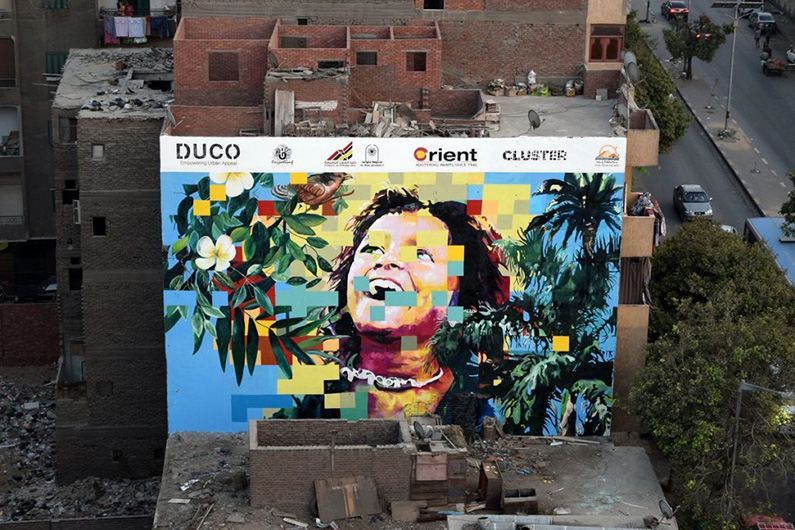More news
- New Managing Director of BASF’s Coatings division
- Global New Material International (GNMI) to acquire Merck’s Surface Solutions busine...
- Delta Coatings unveils plans for global eco-friendly HQ and plant
- PPG recognised for sustainability progress by FTSE4Good for sixth consecutive year
- ChemQuest expands Business Development team, names four VPs

A mural by Cairo-born artist Engy Al Garf has been painted on the wall of a busy neighbourhood in Giza, Egypt, to try to reduce heat in the building and to educate the local population about climate change.
The Participatory Development Programme (PDP) in Urban Areas is an Egyptian-German development measure implemented in co-operation between the Egyptian Ministry of Housing, Utilities and Urban Communities (MoHUUC) and the Deutsche Gesellschaft für Internationale Zusammenarbeit (GIZ) GmbH.
The PDP’s Climate Change Adaptation Strategy aims to support informal settlements adapt to the future impacts of climate change. To this end, the PDP implements architectural measures aiming to reduce heat gain in buildings and public spaces, such as this mural in Masaken Gezriet El Dahab, Giza Governorate. This mural tasks itself with raising environmental awareness and encouraging the local community to take an active stance toward preserving and bettering the environment. The project was commissioned by the German Government and is co-funded by the European Union.
Cairo-born artist Engy Al Garf led the project in collaboration with 15 members of the Faculty of Applied Arts department at Helwan University. DUCO, an organisation geared towards “the facilitation and promotion of public art in an urban context,” organised and produced the project. The project was sponsored by Orient Paints.


The final product blends the calculated scientific elements of climate change with the romanticism of the chaotic, natural beauty surrounding us all.
The scientific aspect manifests through the artists’ use of pixels, which were inspired by the heat sensitivity maps provided by GIZ for the neighbourhood. This strictly quantitative portion of the piece contrasts against its more naturalistic elements, namely, the bright, smiling child’s face marveling upon the flora and fauna surrounding her.
Despite nature’s unruly behavior, it will still bend to overpowering variables – such as those presented by humanity’s hunger for non-renewable resources. Interrupting an idyllic scene such as the one depicted here with the cold, hard facts presented by the pixels in this heat map demonstrates, “the heat build up and impact generated by humans as a result of high population densities [alongside] declining natural resources and an increased demand for energy,” Al Garf explains.
Bringing a multi-faceted mural such as this to life required a multi-faceted approach, consisting of two phases. First, a team of skilled painters applied the pixels pertaining to the map over the course of five days. Phase two lasted nine days and saw a team of fifteen students from Helwan’s Decoration Department assisting with the creation of the piece’s lively natural scene.
From start to finish, this latest artistic intervention in Giza has made a huge splash, with perhaps the most meaningful part being the social impact. DUCO Founder and Managing Director Hassan Ismail noted: “It was interesting to experience realising the mural depending almost solely on girls, between the female lead artist together with fine art student assistants, especially in such a neighbourhood typically dominant by male driven activities and characteristics. Local residents are not used to watching women at work and not familiar about such large artistic murals, they were always curious about who is behind the ‘banner’ and how much it cost. At the end of the day, local residents and business owners were extremely happy about the final outcome and very co-operative by all means; they asked what’s next and are looking forward to continuing with such creative and developmental works in the neighbourhood.”
Since she began painting at the age of 10, Al Garf has developed a body off work comprised predominantly of portraits focused “on introspective emotions and covert inner thoughts.” Her large-scale works are intentionally “abstract and fragmented,” a stylistic choice practically emphasised here with the inclusion of the heat map. This tactic “[allows] the observer to narrate his/her own perspective and create personal associations with the piece.”
Images by Hassan Ismail



